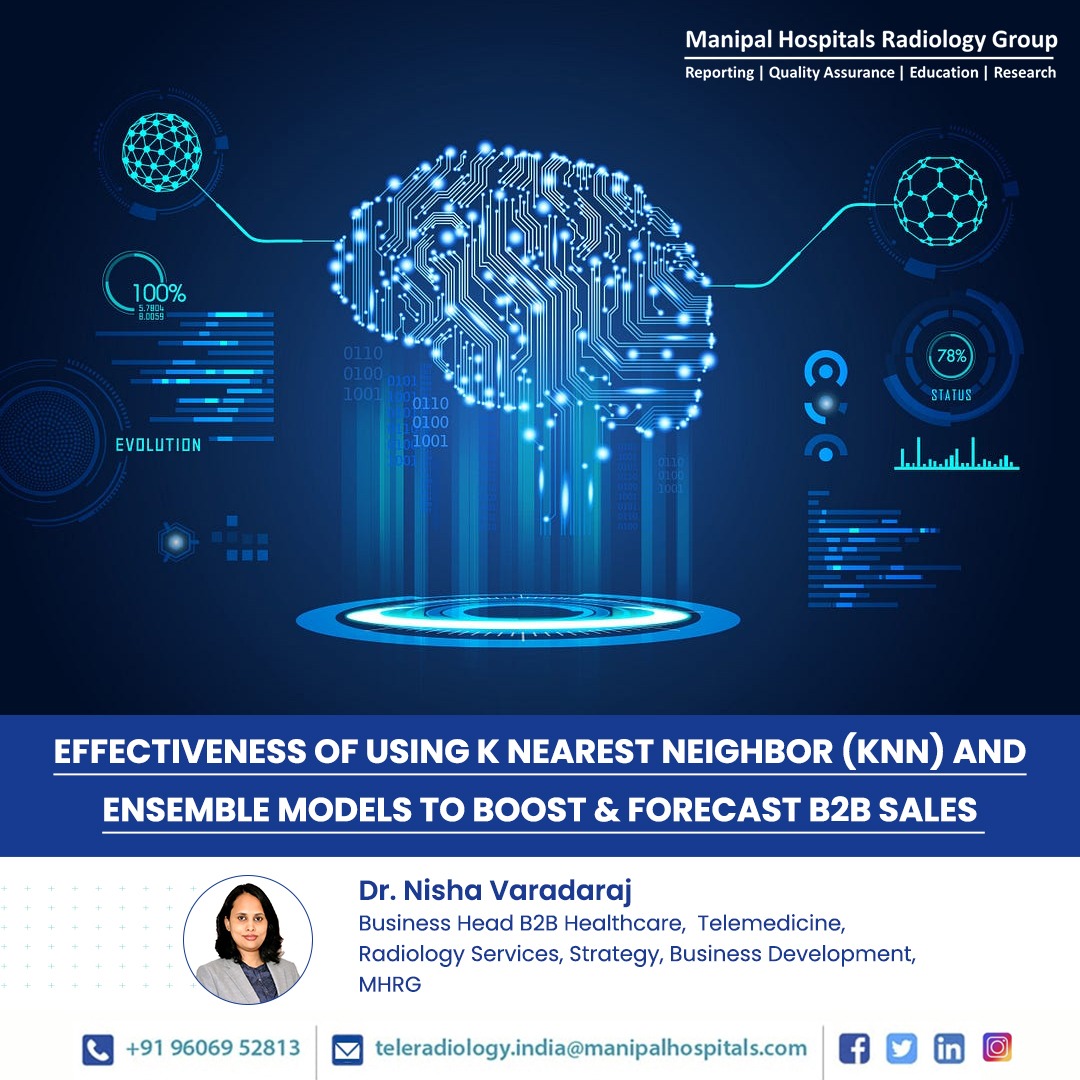The k-nearest neighbors (KNN) algorithm is a non-parametric approach technique classified under unsupervised machine learning and utilizes proximity to classify or predict grouping of an individual data point. It remains one of the popular and simplest classification and regression classifiers in machine learning today.
Nearest neighbor (KNN) is very simple, most popular, highly efficient and effective algorithm for pattern recognition. KNN is a straightforward classifier, where samples are classified based on the class of their nearest neighbor. Medical data bases are high volume in nature.
Larger companies in E commerce use this approach to promote product purchases, user preferences, etc. In a B2B Healthcare business, these models could be used to identify a customer persona, create clusters of likewise data and use such Unsupervised Machine Learning Algorithms to segment data to nearest available data and promote services across the globe.
The biggest challenge today in any organization considering significant competition would be Sales Forecasting. Forecasting sales is crucial when setting up a new business. It helps in assessing the feasibility of success, facing competition and creating demand for the product. A sound forecasting strategy minimizes reliance on luck, contributing to business success.
It is not an easy task to start a new business as it is full of uncertainties and risks. With the help of forecasting, the promoter/leader can find out the success rate in the new business in comparison to existing competition. The demand of the service offered in the market could be speculated and accordingly the required resourced can be planned and sourced. Proper forecasting will help to minimise the role of luck or chance in determining business success or failure
Using multiple models, rather than relying on a single methodology, makes our sales forecasts the most robust and keeps it extremely engaging with the target audience in the market for them to review.
Though this approach can help sales forecasting, the disadvantage of KNN include performance degradation in larger datasets, inability to work well with higher dimensions and chances of missing data.
Coming to Ensemble Models, this is a machine learning approach to combine multiple other models in the prediction process. These models are referred to as base estimators. Ensemble models offer a solution to overcome the technical challenges of building a single estimator. Bagging, boosting, stacking, voting, blending, and cascading are the main types of ensemble methods in machine learning. Ensemble forecasting is a modeling approach that combines data sources, models of different types, with alternative assumptions, using distinct pattern recognition methods.
In a B2B Sales scenario, we would need to try some base models on a few services which we think would be apt for a given customer dataset and then select the diversified models as the base models. Inclusion and training of a meta-learner (it can be as a simple model as LR or a complex model like NN) would be recommended as the next step. The final prediction will be the prediction based on the base model predictions which will be more generalized and will give better-aggregated accuracy for all the services as compared to a single-performing model.
However, all these approaches do come with certain limitations. One limitation is the computational cost associated with ensemble methods, which can be significantly higher compared to training and using a single model. Another limitation is the lack of diversity in the ensemble when models are trained independently or sequentially without considering their interactions.
Dr. Nisha Varadaraj
Business Head B2B Healthcare | Telemedicine, Radiology Services, Strategy, Business Development


